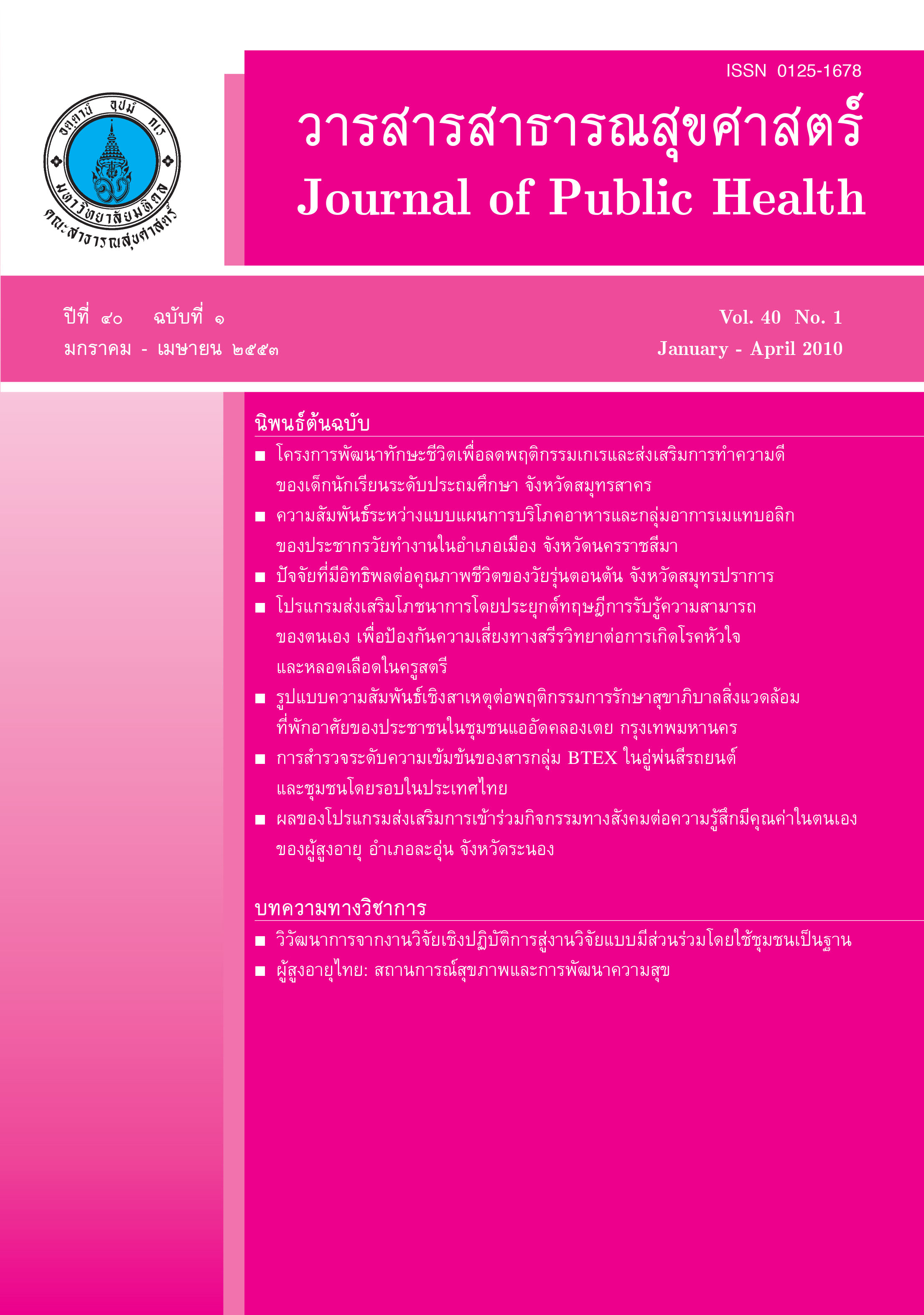รูปแบบความสัมพันธ์เชิงสาเหตุต่อพฤติกรรมการรักษาสุขาภิบาลสิ่งแวดล้อมที่พักอาศัยของประชาชนในชุมชนแออัดคลองเตย กรุงเทพมหานคร
Keywords:
Bangkok, behaviors, causal model, household environment, sanination, slum, การสุขาภิบาล, กรุงเทพมหานคร, ความสัมพันธ์เชิงสาเหตุ, พฤติกรรม, ชุมชนแออัด, สิ่งแวดล้อมที่พักอาศัยAbstract
ABSTRACT
The purposes of this research were to, evaluate the household environment and sanitation behaviors, determine the relationship between the behaviors and the related factors, and analyze a causal model toward household environment and sanitation behaviors. The sample comprised of 500 people living in Klhong Toei community, Bangkok, during October 2007 to March 2008. Multistage sampling technique was used and data collection was done by the questionnaires. Percentage, mean, standard deviation, Pearson’s correlation coefficient and path analysis were used for statistical analysis. The results could be conducted that the mean score of the behaviors was in the middle level ( = 54.07) and factors significantly related were internal-external health locus of control, knowledge, perception (p < 0.001) and intention to practice behaviors (p < 0.01). The causal relationship model was fitted to the empirical data with a chi-square of 3.32, df = 5, p = 0.65, Goodness of Fit Index (GFI) = 1.00, Adjusted Goodness of Fit Index (AGFI) = 0.99 and Root Mean Square of Appoximation (RMSEA) = 0.00. The model revealed that the factors affected both direct and indirect to the behaviors were ages, social support, internal-external health locus of control and intention to practice. The suggestion was action programme focus on social support and internal-external health locus of control should be conducted and studied the other variables that be concerned.
Key words: Bangkok, behaviors, causal model, household environment, sanination, slum
Downloads
Issue
Section
License
Creative Commons License CC-BY-ND


